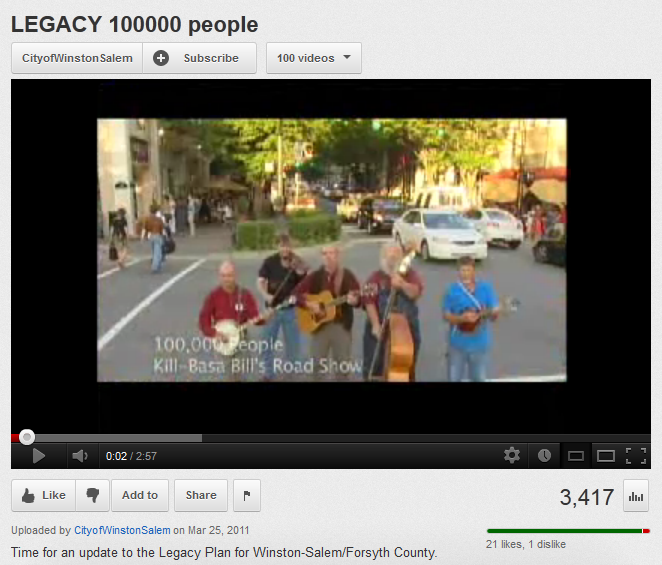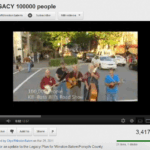
 In recent decades, levels of civic and political participation have declined dramatically. In order to supplement traditional public engagement techniques, some planners and public officials are turning to the internet. Whether it is advertising the planning process through social media or engaging the public’s comments and action through e-participation websites, cities and towns are bringing people to the table through new and interesting web-based approaches.
In recent decades, levels of civic and political participation have declined dramatically. In order to supplement traditional public engagement techniques, some planners and public officials are turning to the internet. Whether it is advertising the planning process through social media or engaging the public’s comments and action through e-participation websites, cities and towns are bringing people to the table through new and interesting web-based approaches.
The City of Winston-Salem, NC is in the process of updating their comprehensive plan. In an attempt to engage more people in the process, the City turned to YouTube. With the help of a local bluegrass band, Winston-Salem’s comprehensive planning process was attached to a catchy tune. The song touches on the factors important to many residents, the significance of the comprehensive planning process, and includes links to the City’s website and blog.
To engage the community further, some cities are seeking residents’ feedback on the web. Sites like Mindmixer use pictures, polls, videos, and a point system to engage community members. Mindmixer is a hip, interactive, idea-generator. Cities set up topics to be discussed; participants submit ideas and give feedback on others’ ideas. The more active a participant, the more points they are awarded. Mindmixer works for community planning efforts of many scales — in large cities like Los Angeles to mid-size cities like Flagstaff, Arizona to regional planning like Vision West North Dakota.
Web-based tools can generate greater participation rates in community planning, newly engaged groups of people, and flexibility for residents who cannot physically make it to a public meeting. However, there are obvious disadvantages to widespread use of digital media in the planning process. First, the digital divide is alive and still affecting many communities. Low-income residents may not have access to computers or the internet, and many rural communities do not have broadband connectivity. Second, towns may not have the resources to design new websites, film a video, or update a weekly blog. Set up and maintenance can be time-consuming and expensive.
E-participation is not the solution to every community’s civic engagement challenge. E-participation is a tool in a larger toolbox. How can the internet supplement face-to-face meetings? How can blogs, videos, forums, Facebook, Twitter, and e-participation websites engage groups of people that are normally disconnected from the process? How can communities work together, across geographic boundaries, to brainstorm and implement a new vision for their city? The following resources may be helpful to community leaders navigating these issues:
- ttp://open311.org/
- http://commons.codeforamerica.org/
- http://www.fixmystreet.com/
- https://neighborland.com/
- http://seeclickfix.com/
*Image description: Kill Basa Bill’s Road Show performs “100,000 People” to advertise Winston-Salem’s comprehensive planning process, 2011.
